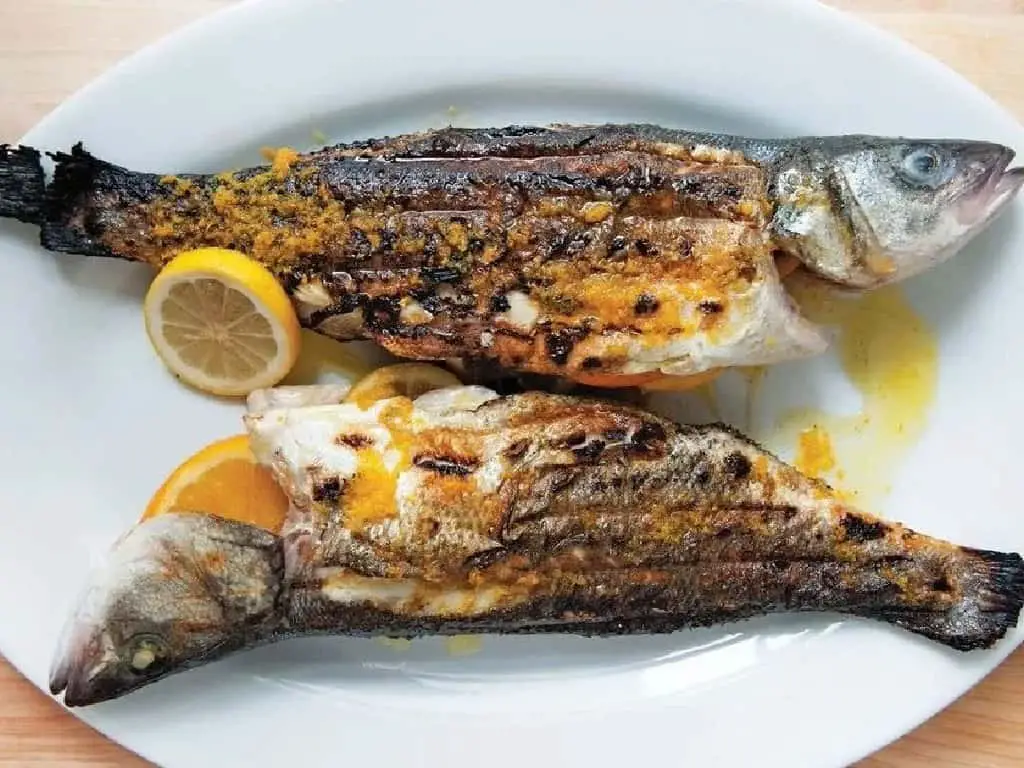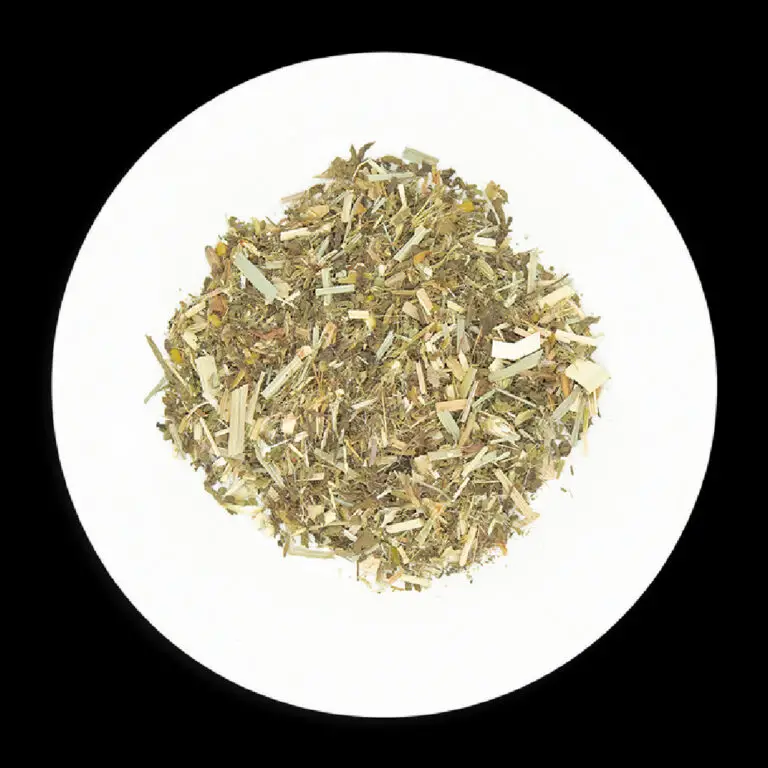Branzino vs. Branzini: What’s the Difference?

If you’re a seafood lover, you may have come across two similar-sounding names: branzino and branzini. These names are often used interchangeably, leading to confusion among many food enthusiasts.
In this article, we will explore the key differences between branzino and branzini, helping you to understand what sets them apart and make more informed decisions when it comes to choosing the perfect fish for your next culinary adventure.
Origin and Names
To start, let’s shed some light on the origins and names of these two fishes. Branzino and branzini both refer to the same species of fish, scientifically known as Dicentrarchus labrax. However, the names have different roots.
- Branzino: The term “branzino” is derived from the Italian word “branzino,” which translates to “sea bass.” It is commonly used in Italian and Mediterranean cuisine.
- Branzini: On the other hand, “branzini” is the plural form of “branzino” and is used to refer to multiple fish of the same species. This plural form is commonly used in English-speaking countries.
While the names may differ slightly, it’s important to note that branzino and branzini are essentially the same fish.
Physical Characteristics
Branzino/branzini have distinct physical characteristics that make them easily identifiable:
- Size: Branzino/branzini typically range from 1 to 2 pounds in weight, with an average length of around 12 to 24 inches. However, larger specimens can reach up to 10 pounds.
- Shape: These fish have a streamlined body shape with a slightly elongated and tapered head. Their bodies are silver-gray in color with a hint of green, and they have a metallic sheen on their scales.
- Fins: Branzino/branzini have a prominent dorsal fin along their back and a set of pectoral fins on either side. The dorsal fin is typically spiky and extends the length of their back.
- Teeth: One distinguishing feature of branzino/branzini is their sharp teeth. They have multiple rows of sharp teeth in both their upper and lower jaws, allowing them to catch and feed on smaller fish.
Habitat and Distribution
Branzino/branzini are native to the coastal waters of the Mediterranean Sea and the eastern Atlantic Ocean. They can be found along the coasts of Europe, from Norway to Senegal, and are particularly abundant in regions such as Italy, Greece, Spain, and Portugal.
These fish are known for their preference for warm and temperate waters, making them well-suited to the Mediterranean climate. Branzino/branzini are highly adaptable and can thrive in various habitats, including rocky shores, estuaries, and even freshwater environments.
Culinary Uses and Flavor Profile
Both branzino and branzini are highly prized for their delicate and flavorful flesh, which lends itself well to various culinary preparations. These fish have a mild, slightly sweet flavor and a tender, flaky texture when cooked.
In Mediterranean cuisine, branzino/branzini are often prepared by grilling, roasting, or pan-searing. Their firm flesh holds up well to these cooking methods, resulting in a crispy skin and moist, succulent meat. They can also be stuffed with herbs, lemon slices, or other flavorful ingredients to enhance their taste.
Branzino/branzini pair well with a variety of herbs and seasonings, such as rosemary, thyme, garlic , lemon zest, and olive oil. These ingredients complement the natural flavors of the fish and add a delightful aromatic touch.
One popular Mediterranean dish featuring branzino/branzini is “Branzino al Cartoccio”, which translates to “Branzino in Parchment.” This method involves wrapping the fish in parchment paper along with herbs, vegetables, and a splash of white wine. The package is then baked, allowing the flavors to meld together and infuse the fish.
Another classic preparation is Branzino/branzini “Acqua Pazza”, which means “Crazy Water” in Italian. This dish involves poaching the fish in a fragrant broth made with tomatoes, garlic, olive oil, and herbs. The result is a light and flavorful dish that showcases the delicate taste of the fish.
Availability and Sustainable Fishing
Due to their popularity and culinary appeal, branzino/branzini have become sought-after fish in many markets around the world. However, it’s essential to consider the sustainability of their fishing practices to ensure their long-term availability.
When purchasing branzino/branzini, look for fish that are caught using sustainable methods, such as hook-and-line or trap fishing. These methods have less impact on the environment and help maintain healthy fish populations. Additionally, choose fish that have been certified by reputable seafood sustainability organizations, such as the Marine Stewardship Council (MSC) or the Aquaculture Stewardship Council (ASC).
By making conscious choices and supporting sustainable fishing practices, we can enjoy branzino/branzini while preserving their populations for future generations.
Cooking Tips and Recipe Ideas
If you’re eager to try cooking branzino/branzini at home, here are a few tips to help you achieve delicious results:
- Freshness: Opt for fresh branzino/branzini whenever possible. Look for clear eyes, shiny skin, and a mild oceanic smell. If whole fish is not available, you can also find fillets or steaks at your local fish market.
- Preparation: Before cooking, rinse the fish under cold water and pat it dry with a paper towel. Season it with salt, pepper, and your choice of herbs or spices. You can also drizzle it with olive oil or butter to keep it moist during cooking.
- Grilling: Preheat your grill to medium-high heat. Brush the grill grates with oil to prevent sticking. Place the branzino/branzini directly on the grill and cook for about 4-5 minutes per side, or until the flesh is opaque and easily flakes with a fork.
- Roasting: Preheat your oven to 400°F (200°C). Place the seasoned fish on a baking sheet lined with parchment paper or aluminum foil. Roast for approximately 12-15 minutes, or until the fish is cooked through and the skin is crispy.
- Pan-searing: Heat a skillet over medium-high heat and add a small amount of oil or butter. Place the fish in the pan, skin side down, and cook for about 3-4 minutes. Flip the fish and continue cooking for an additional 3-4 minutes, or until done.
Now that you have some cooking tips, let’s explore a flavorful recipe to showcase the versatility of branzino/branzini:
Grilled Branzino with Lemon and Herbs
Ingredients:
- 2 branzino/branzini, cleaned and scaled
- 2 lemons, thinly sliced
- Fresh herbs (such as rosemary, thyme, or dill)
- Salt and pepper, to taste
- Olive oil
Instructions:
- Preheat your grill to medium-high heat.
- Rinse the branzino/branzini under cold water and pat them dry with a paper towel.
- Make a few diagonal cuts on both sides of the fish. This helps the heat penetrate and ensures even cooking.
- Season the fish generously with salt and pepper, both inside and out.
- Stuff the cavity of each fish with a few slices of lemon and a handful of fresh herbs.
- Brush the grill grates with olive oil to prevent sticking.
- Place the branzino/branzini directly on the grill and close the lid. Cook for about 4-5 minutes per side.
- Gently flip the fish using a spatula or tongs and cook for an additional 4-5 minutes, or until the flesh is opaque and easily flakes with a fork.
- Carefully remove the fish from the grill and transfer them to a serving platter.
- Serve the grilled branzino/branzini with additional lemon slices and fresh herbs for garnish.
- Enjoy your flavorful and succulent grilled branzino/branzini!
What are some common dishes that feature Branzino or Branzini?
Both Branzino and Branzini are featured in a wide range of delicious dishes. Some common preparations include:
- Grilled Branzino or Branzini with lemon and herbs
- Roasted whole Branzino or Branzini stuffed with aromatic ingredients
- Pan-seared Branzino or Branzini fillets with a buttery sauce
- Mediterranean-style baked Branzino or Branzini with tomatoes and olives
- Branzino or Branzini ceviche marinated in citrus juices
- Branzino or Branzini tacos with fresh slaw and flavorful toppings
- Branzino or Branzini fillets served over risotto or alongside roasted vegetables
These are just a few examples, as the culinary possibilities with Branzino and Branzini are extensive. Their mild flavor allows them to pair well with various herbs, spices, and complementary ingredients, making them versatile options for creative and delicious seafood dishes.
Conclusion
In summary, while the names branzino and branzini may sound different, they refer to the same species of fish: Dicentrarchus labrax. Branzino is the singular form commonly used in Italian cuisine, while branzini is the plural form often used in English-speaking countries. These fish are known for their delicate flavor, firm texture, and adaptability to various cooking methods.
Whether you’re grilling, roasting, or pan-searing, branzino/branzini offer a delightful seafood experience. Remember to choose sustainably sourced fish to support the long-term availability of these delicious species.
Now that you’re equipped with knowledge about the differences between branzino and branzini, as well as some cooking tips and a mouthwatering recipe, it’s time to embark on your culinary adventure and savor the unique flavors of this exquisite fish. Happy cooking!






